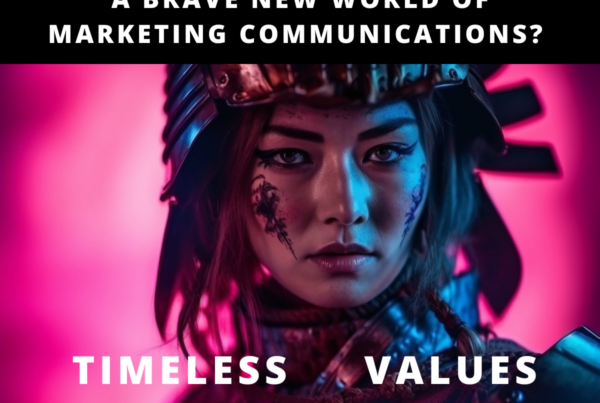Communicate who you are first, and the rest will follow
There are 171,146 words in the English language. Why aren’t we using them?
In this month’s blog we tackle the issue of how to communicate what you offer in an industry when it is not product differentiation that is shrinking, but the vocabulary we use to describe it.
What’s in a name?
“That which we call a rose by any other name would smell as sweet”
If we were paying attention in our high school literature class properly, what Shakespeare meant by this was that words are a convention we’ve adopted to delineate things, but they themselves carry no inherent value. Many linguists, however, have taken another view – arguing that even though the sounds we choose are largely arbitrary (hence why we have so many languages), language itself is far from a mere label; it is a substance in itself from which meaning is created. Far from purely communicative, language might in fact be material.
It’s a theme we’ve brought up in previous blogs (in large part because our Xpresso team combines immersive knowledge of Telecommunications technologies with various academic backgrounds in linguistics, philosophy and sciences). But we had more reason than ever to contemplate these ideas at a few recent trade shows. As we walked around the halls it was clear that many different efforts were being made to achieve differentiation; booth design, layout, branding, colouring, employee outfits, coffee, freebies, alcohol… a multitude of subtle elements coming together to try to say something about the company.
But do you know what wasn’t saying much at all? Language.
Breaking through the din
What we saw was the same language used over and over again. ‘Broadcast’, ‘platform’, ‘delivery’… and the most dreaded of all: ‘solution’ – words that play out again and again but somehow say so little about what a company actually does.
Even the central term to describe the industry: ‘broadcast’ – has become diluted and confused, meaning once audio and video, and then in an IP and network era something technically specific, to be differentiated from things like uni- and multicast. Now? It’s really just a term we use to refer to ‘our industry’, which itself has become complex and sprawling, both technologically and conceptually.
We’re at a stage where the language which has become entrenched through ‘marketing speak’ has led to a lack of clarity: a dilution of intent and purpose. We risk reaching a stage where many words in the industry mean everything and nothing all at the same time. Customers can roam the halls of NAB, MPTS, CABSAT, ANGACOM and IBC seeing bright colours, but having no real sense of what a company does.
The same goes in the virtual world. As Steve Job famously said: ‘Customers don’t know what they want’, which means their search terms can be both wildly general and wildly specific all at the same time, with even the tech-savvy tends to ask questions regarding problems and desired outcome rather than using terms such as ‘acquisition’, ‘monitoring’, ‘delivery’, ‘playout’ or’ orchestration’. So why is this the language the industry is still using?
There are two things companies should consider to combat this.
Communicating your personality
The first is that if customers don’t know how to ask for what they want, they need to be shown. And that means putting your name and ideas in front of them before they even knew they were looking for anything anyway. Building a reputation in the industry is paramount.
 What this means practically is that companies in tech industries (and indeed in any B2B industry) need to lead with personality before product. The impact you make in the industry – as people, with personality, trust and connection – is what will permeate the industry’s collective consciousness. Humour, intelligence, showmanship: these elements catch the attention of customers directly, and just as importantly, the forces that shape industry opinion and direction as a whole (the press, industry bodies, veteran experts, etc).
What this means practically is that companies in tech industries (and indeed in any B2B industry) need to lead with personality before product. The impact you make in the industry – as people, with personality, trust and connection – is what will permeate the industry’s collective consciousness. Humour, intelligence, showmanship: these elements catch the attention of customers directly, and just as importantly, the forces that shape industry opinion and direction as a whole (the press, industry bodies, veteran experts, etc).
Essentially, brand and identity differentiation are now as or perhaps even more important than product differentiation, because it is these elements that set the base for generating ‘qualified leads’, based on leveraging contacts, networking and ‘informal’ channels of communication. This means that reaching out to customers – existing and potential – in ways that educate, inform, enrich and entertain – is vital; seeking to foster an initial, non-agenda-led relationship that can organically turn into a ‘qualified lead’ down the road.
Now, it’s important to be clear: nobody is being naïve here. Customers know that there is a power dynamic at play – companies want their business. But equally, customers want a company’s product… if it’s the right one for them.
Good marketing and sales isn’t out to fleece or manipulate anybody: it’s about seeking to offer something of genuine benefit, tailored to a client’s needs, and offered in an environment of trust, openness and respect. Creating industry relationships allows for both parties to set this base in a meaningful and real way.
Customers will smell when that relationship is being manipulated a mile off – through lies, deceit or pushiness. Everybody can be transparent about the fact that business relationships carry with them an eventual agenda, on both sides. But that doesn’t mean the relationship itself has to be a fiction: it can be founded on proper values of connection, and a genuine desire to improve the position of the client by putting the right product in their hands.
Finding the right words
The points above don’t mean that cold leads through search engines should be discounted. They still matter. But generating them will become an increasingly complex undertaking: finding language that is broad enough to meet the general search terms used by potential clients, but accurate enough to communicate exactly what you do, what you offer, and how it differs from competitors. It requires a balance of creativity and calculation.
Communication is key
Of course, the answer to both of the points above is effective communication. Four essential questions arise from the issues above:
- How do you communicate personality effectively?
- How do you identify the language your customers are using in their searches, and match it?
- How do you communicate what you do clearly, quickly and concisely, in a way that is comprehensible to technical and non-technical audiences alike?
- Does it make more sense to use descriptive terms that audiences are already familiar with, but which are ubiquitous and non-specific, or to coin new terminology with higher specificity and accuracy, and lower industry recognition?
The answer to these questions is ostensibly a simple one – find the right communications partner who can work with you to identify the best strategy for your business. But that can be easier said than done. Key questions you need to ask are:
- What size of agency would suit me best? A behemoth with potentially broad reach but a ‘cookie cutter’ approach to service and strategy? Or a smaller, bespoke agency that is responsive, agile and adaptable to existing workflows, culture and messaging?
- What role should metrics – and even AI – play in delivering our communications?
- How well can an external partner really understand what our business is about, and communicate both brand personality and product differentiation in a complex technical market?
- How do we balance short term sales with long-term relationship building? What payoff should we be looking for, and when?
There is of course no one-size-fits-all answer – though in previous blogs we’ve discussed in more detail some of the key issues at stake in picking a partner, and next month we will be taking a deeper dive into the strategic viability of four different communications approaches: namely, in-house, AI-led, corporate and bespoke.
But in the meantime, if you want to talk through these questions with us directly – establishing what you need and whether we at Xpresso are best placed to meet that need, please feel free to connect.





